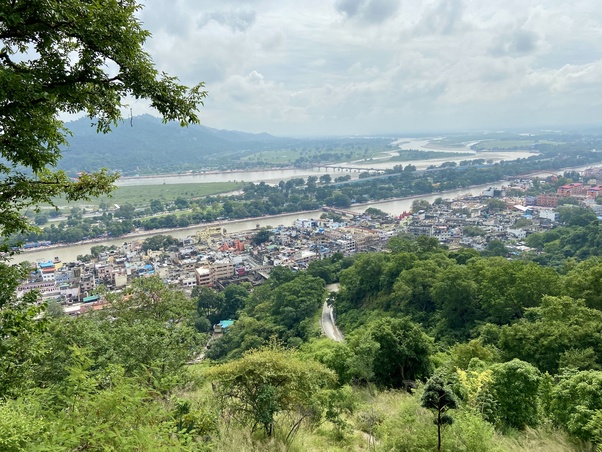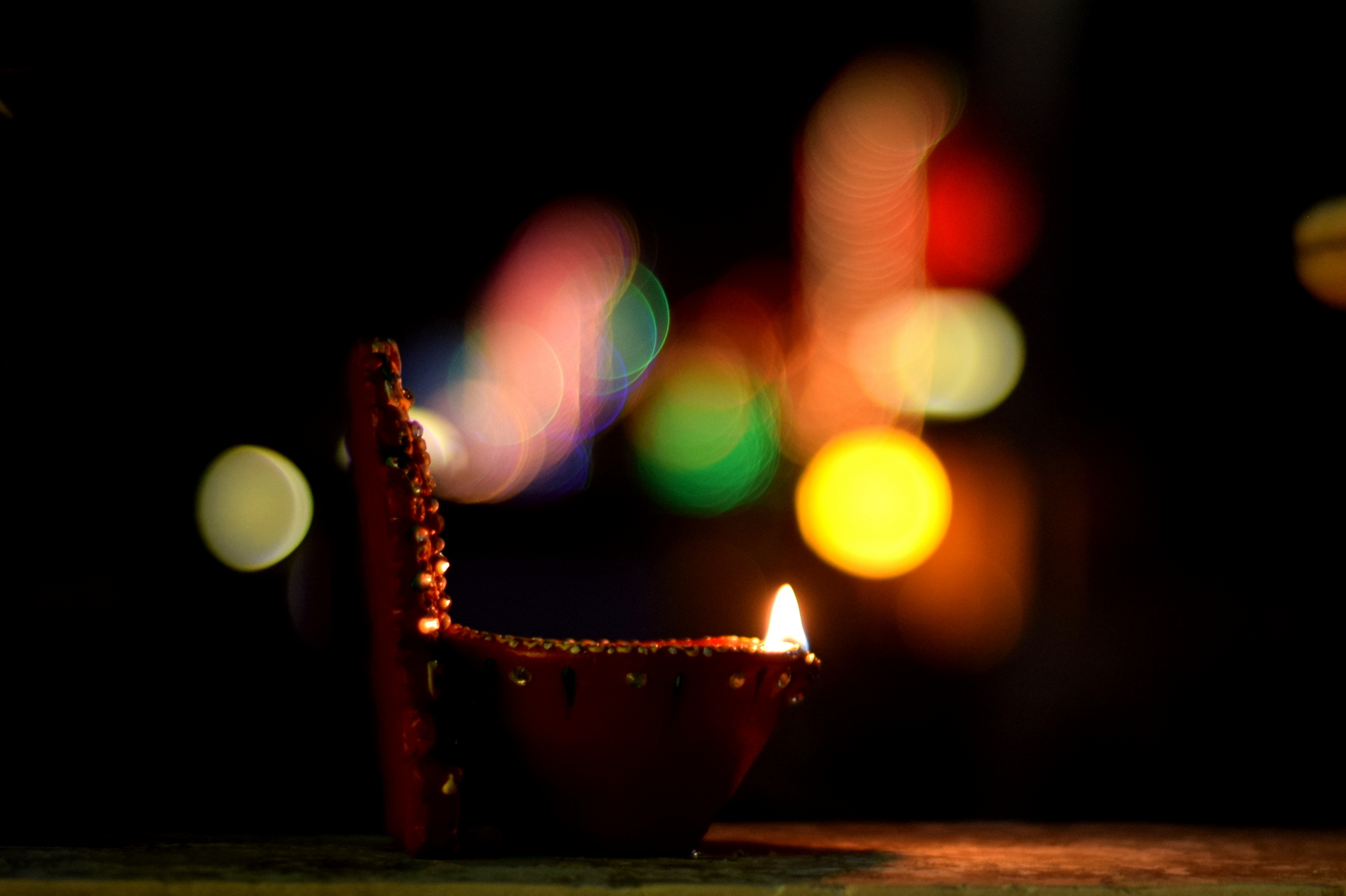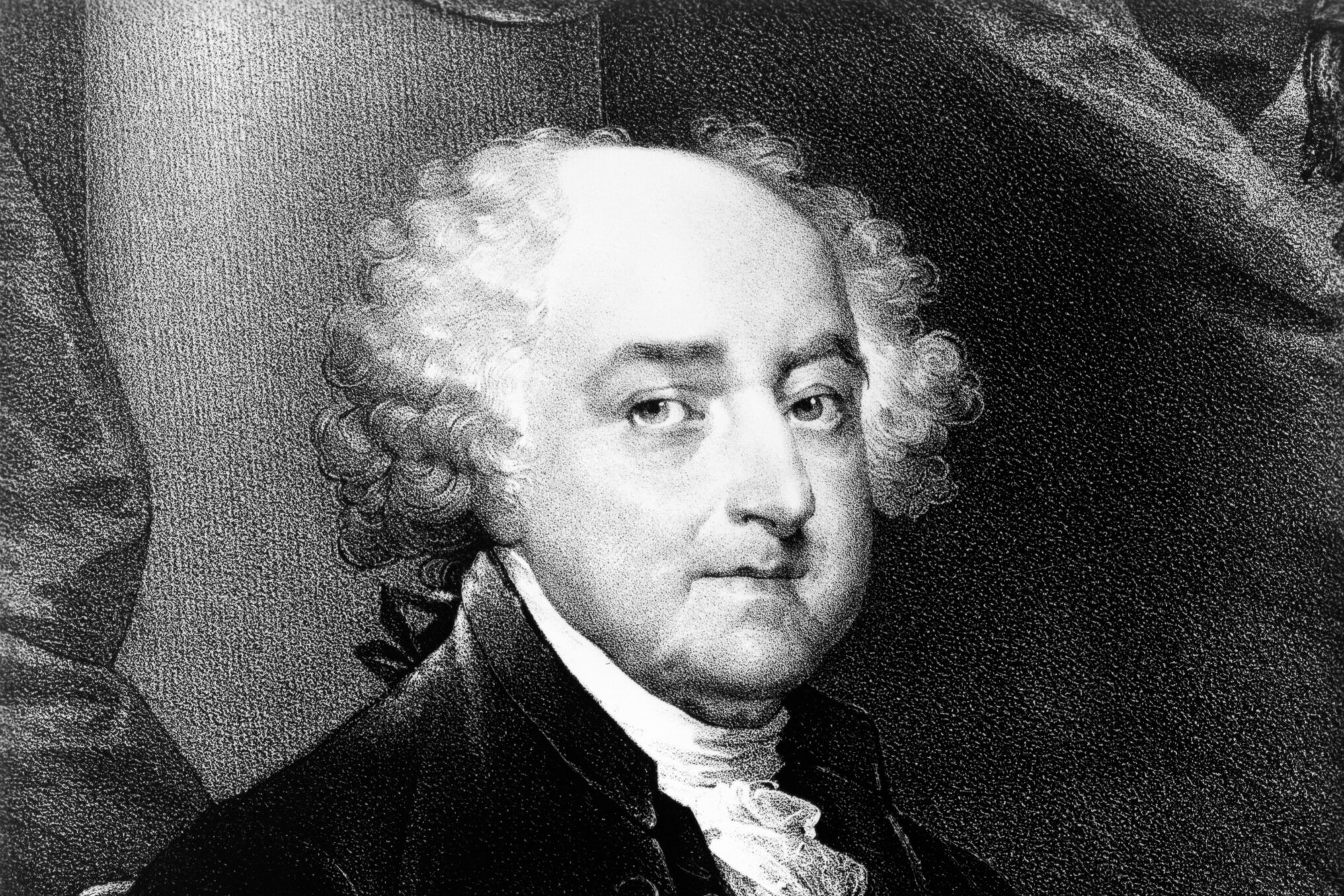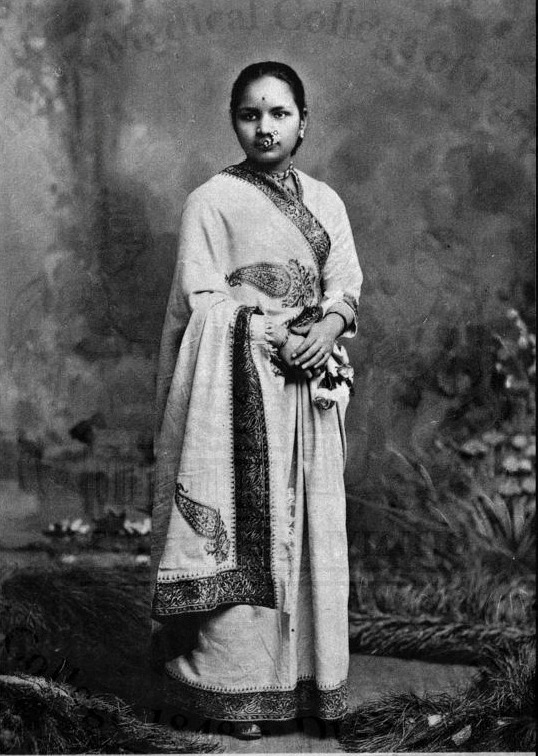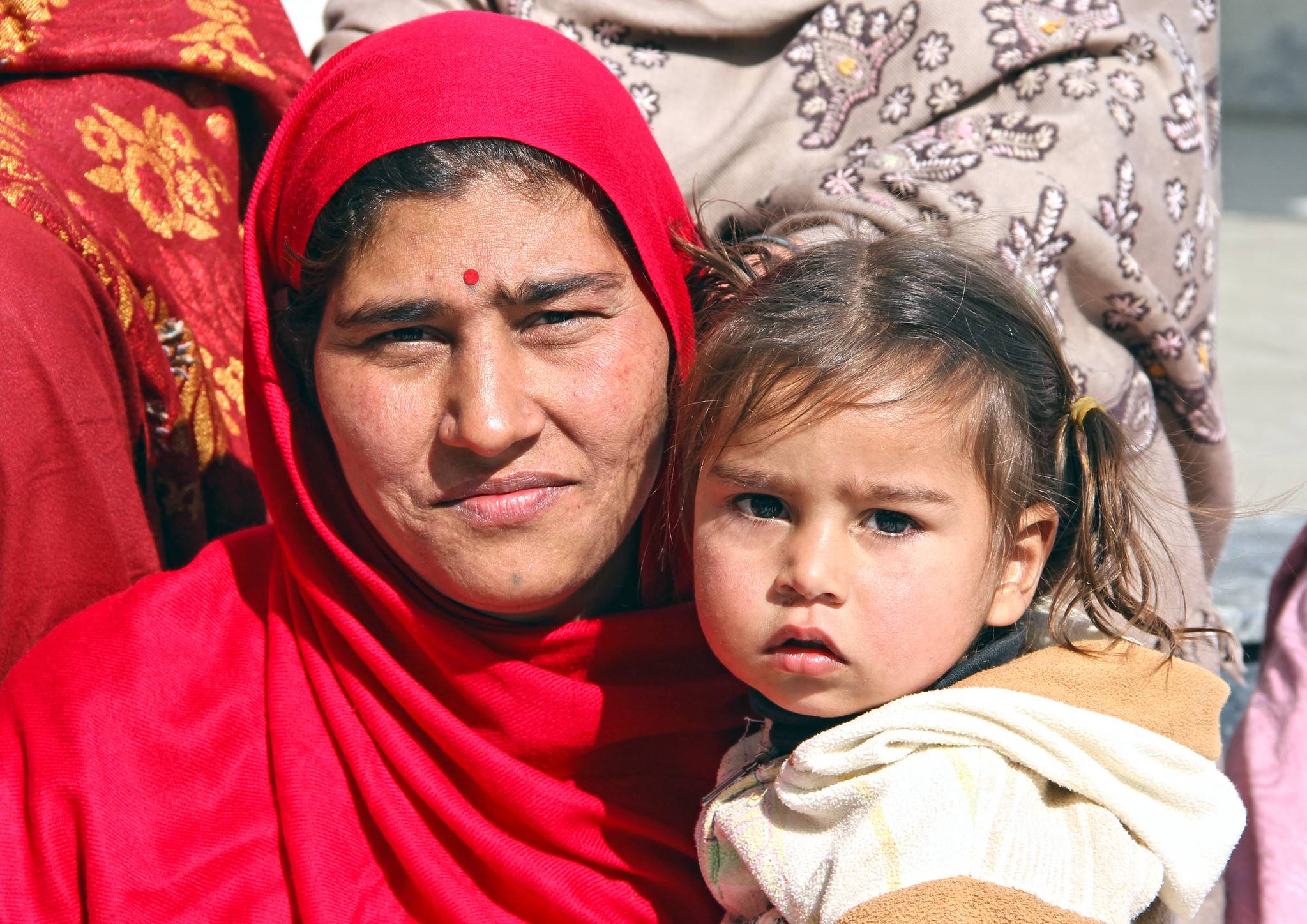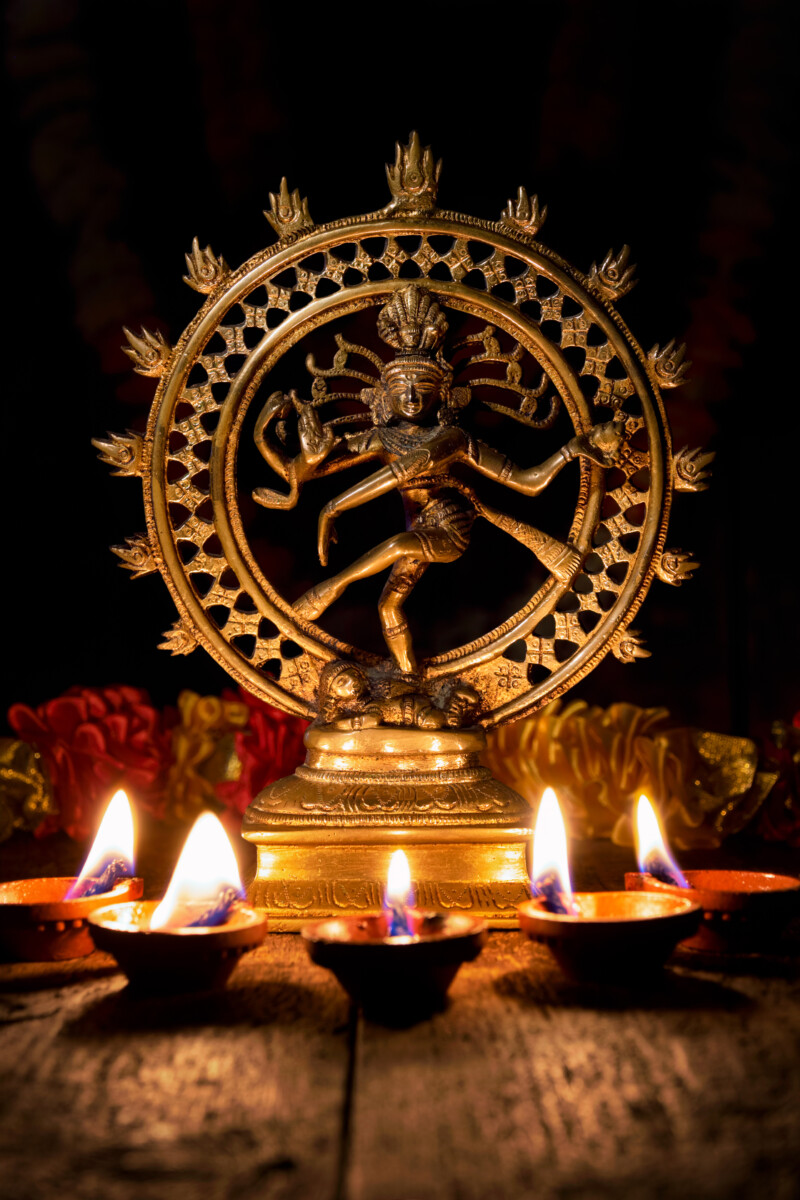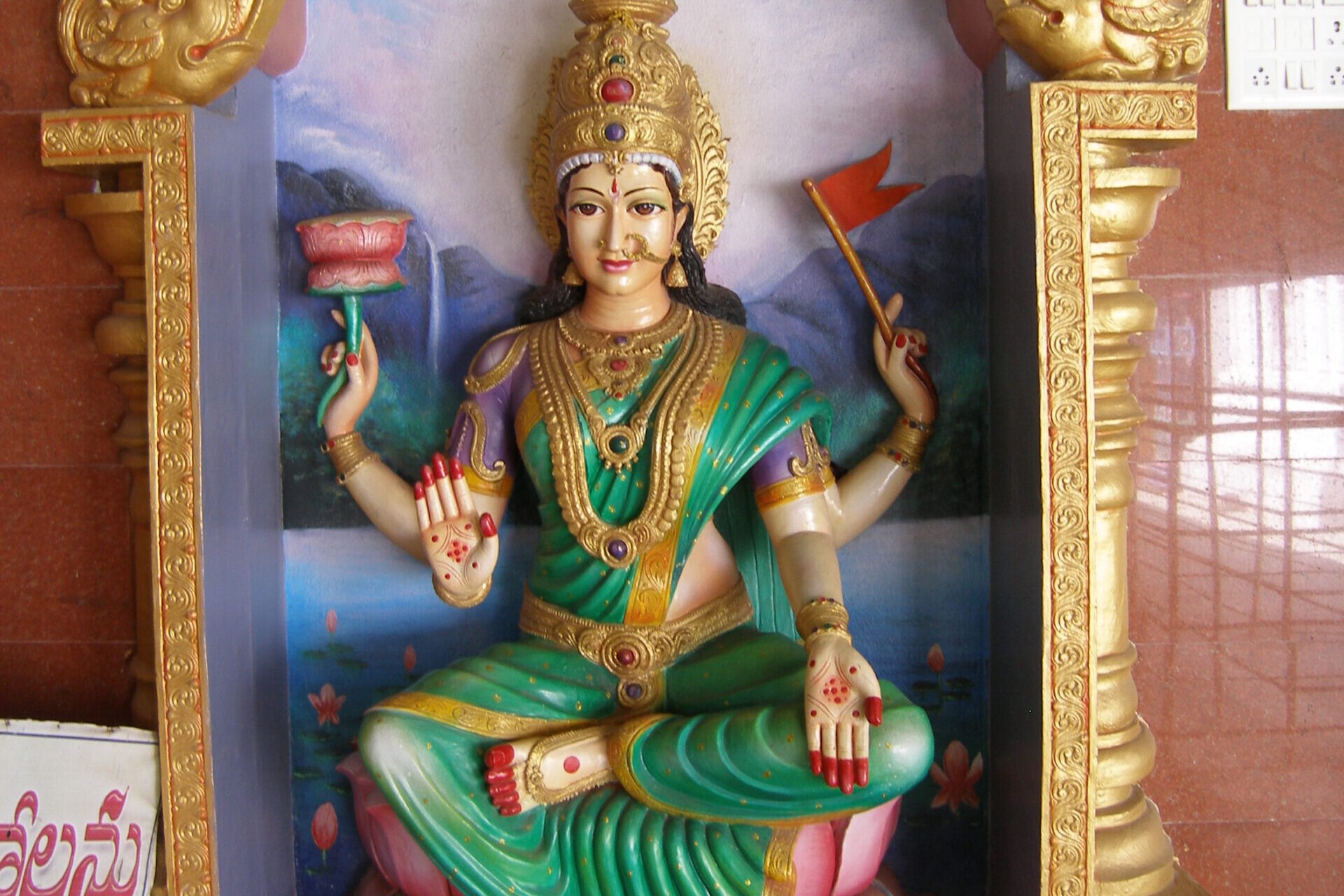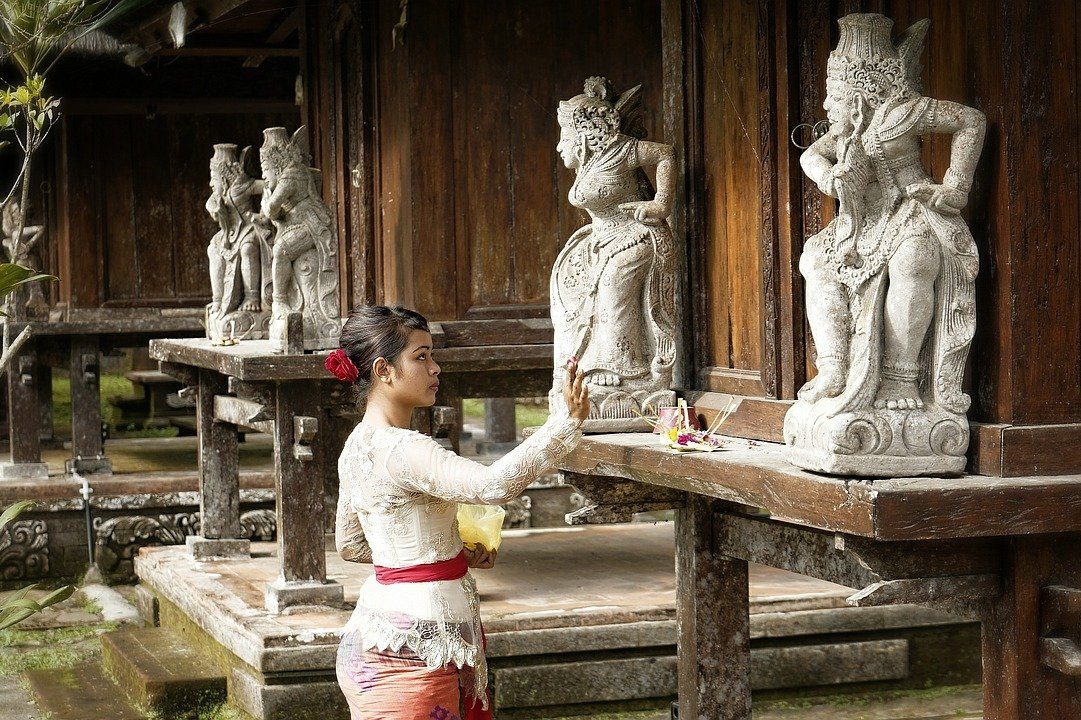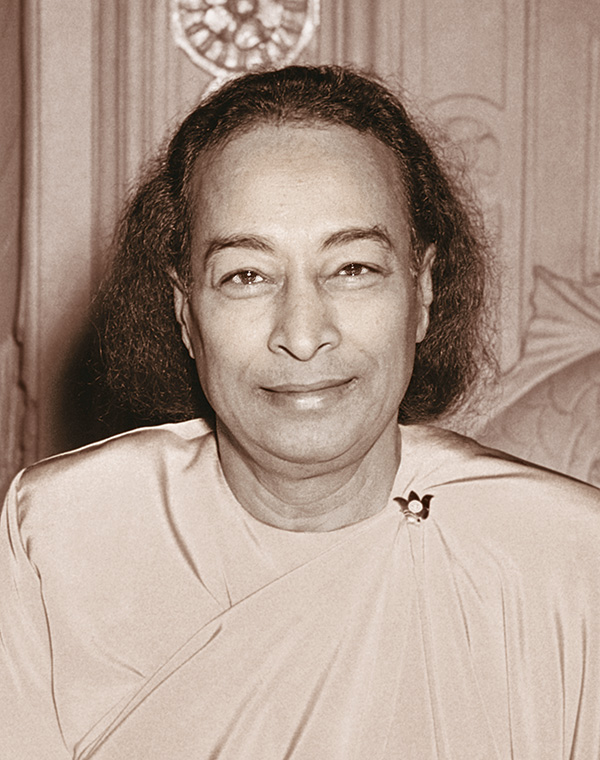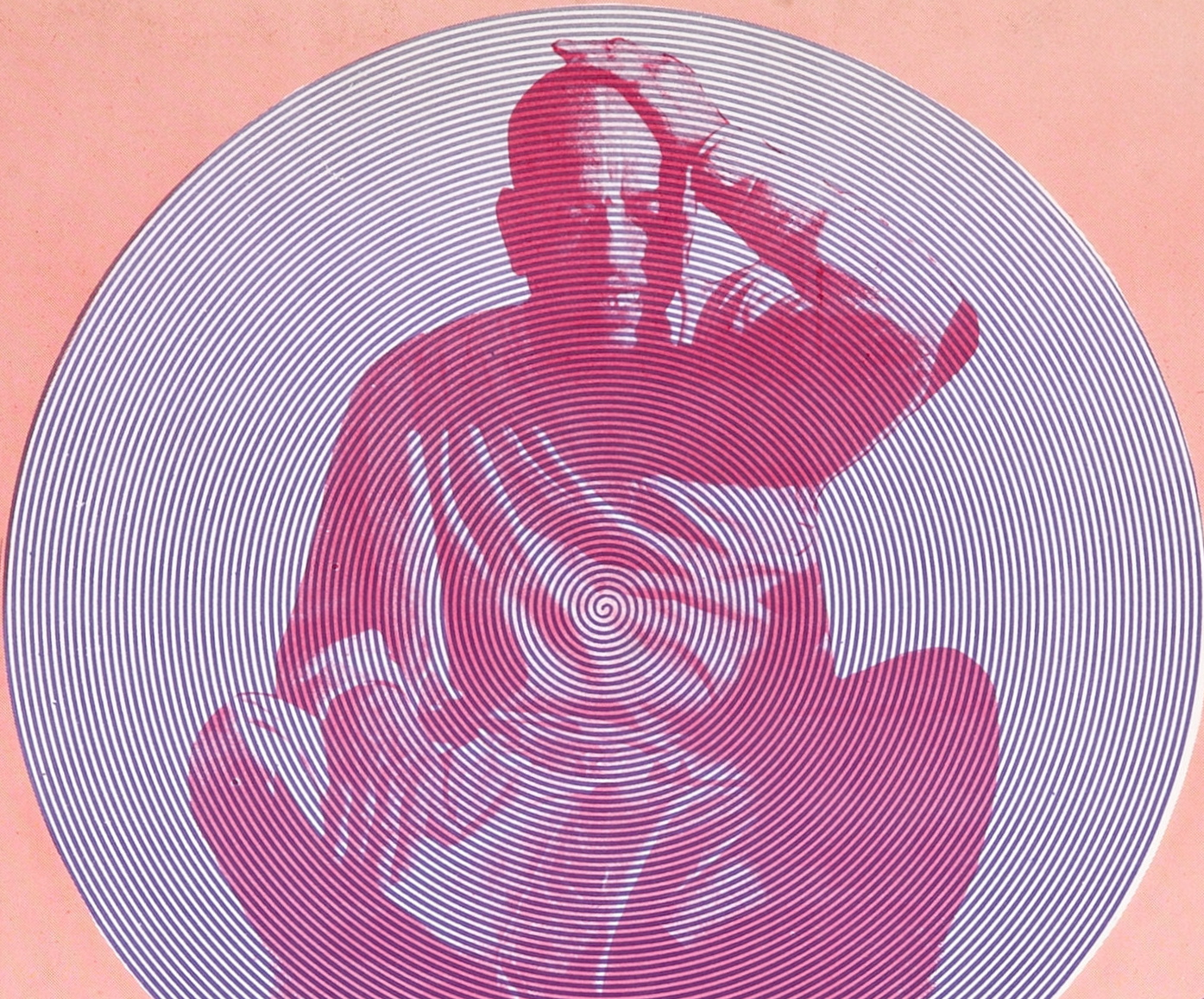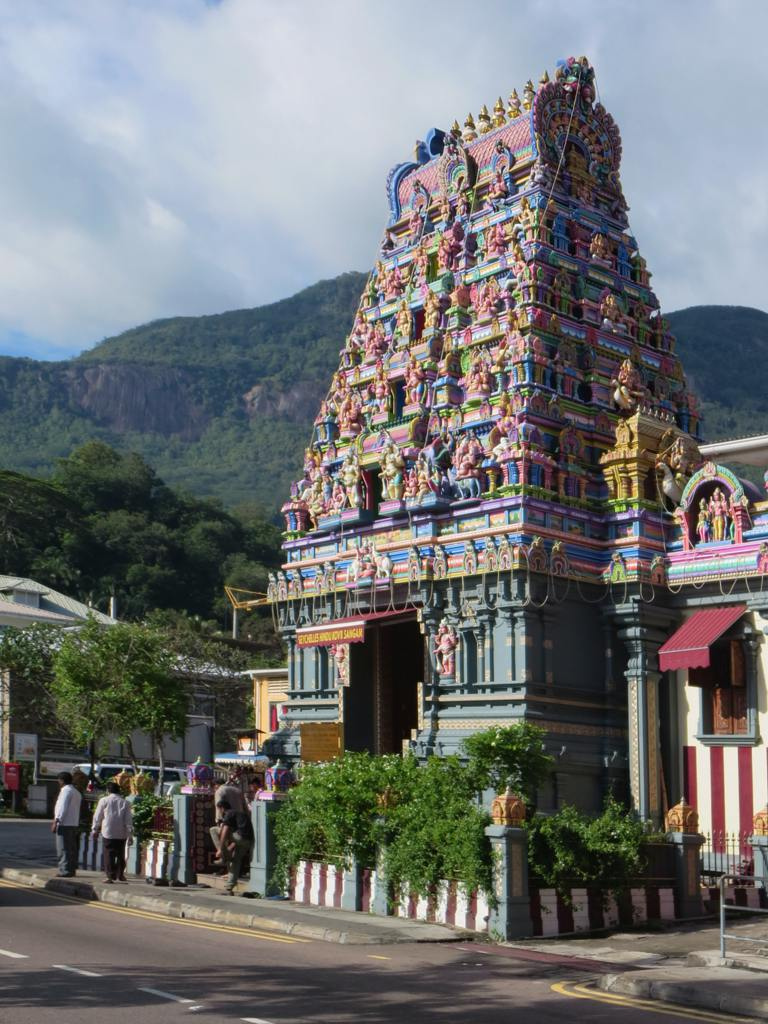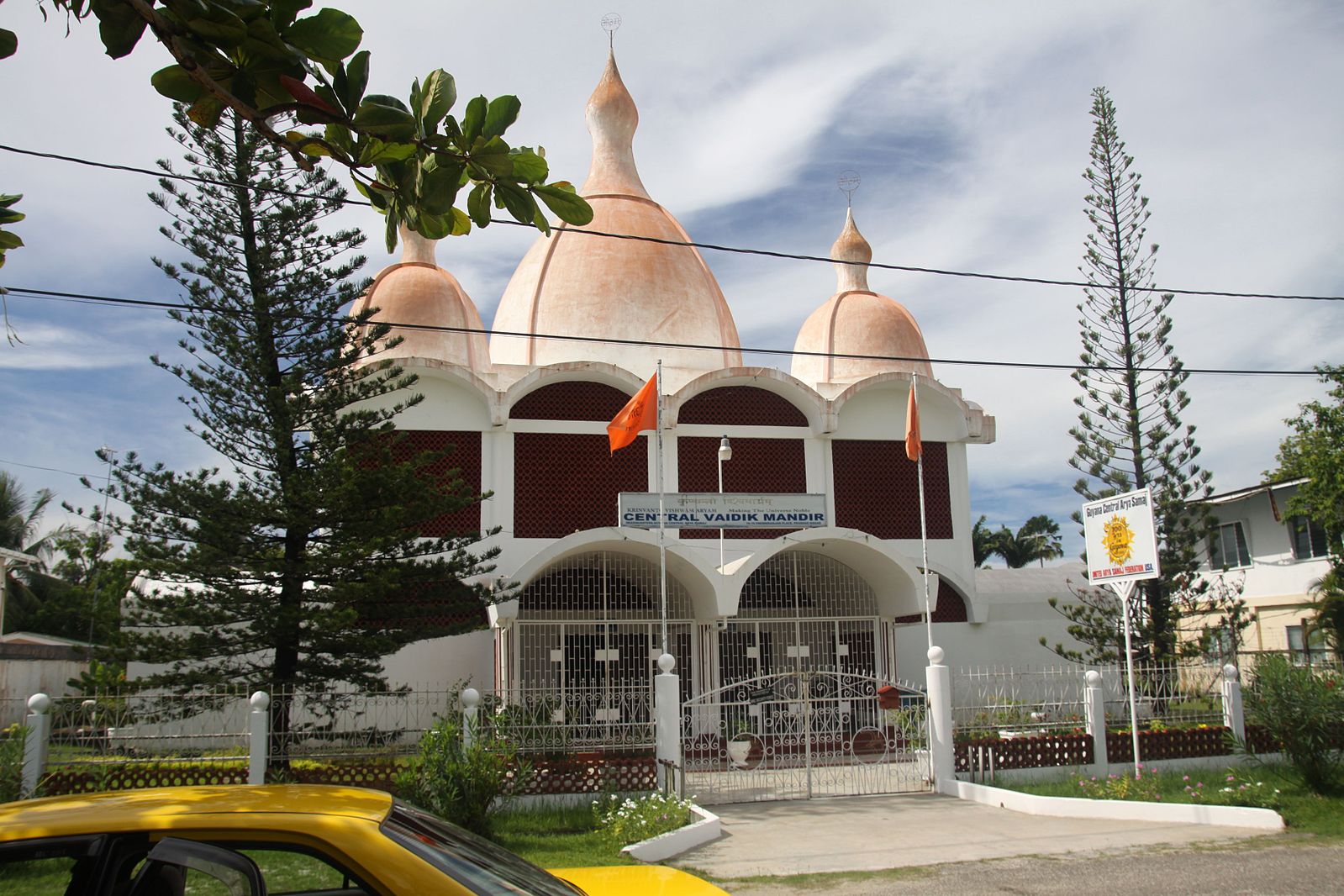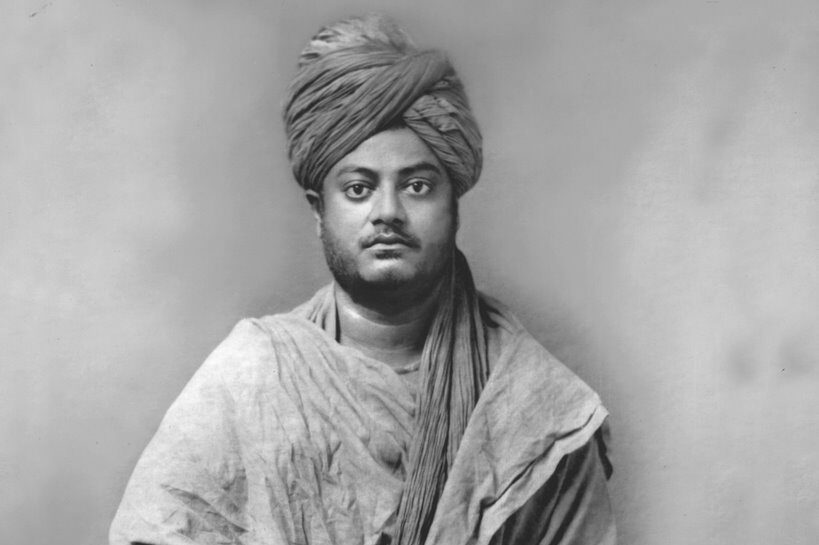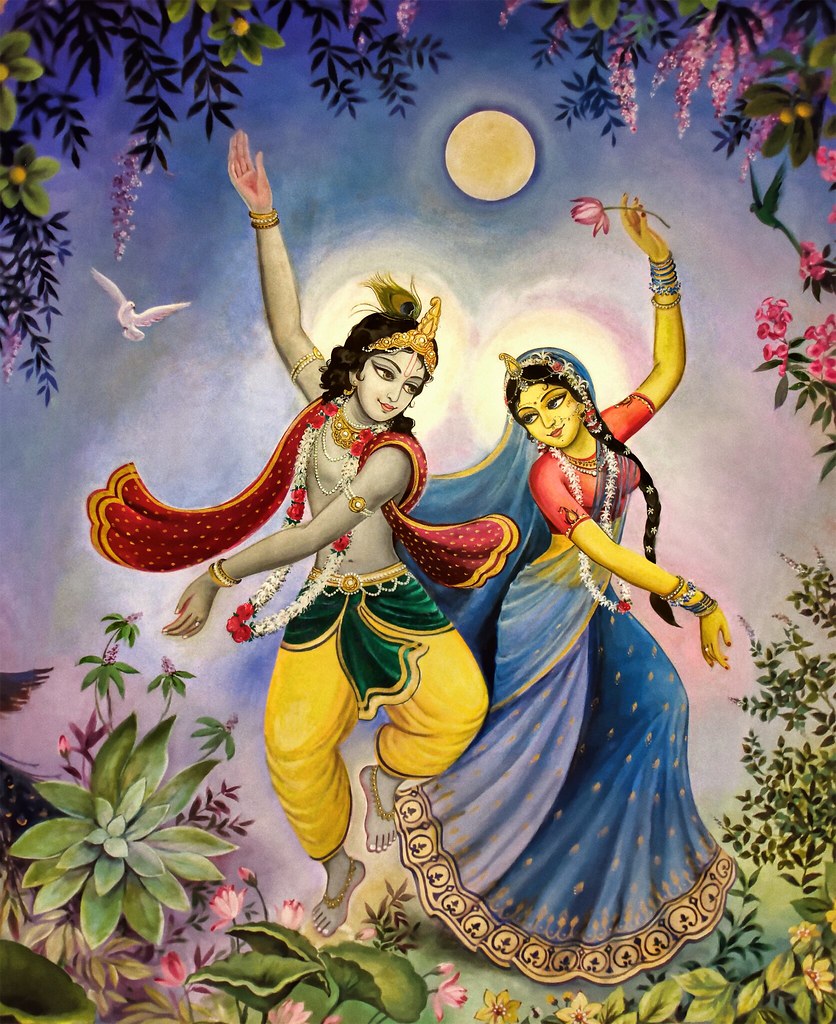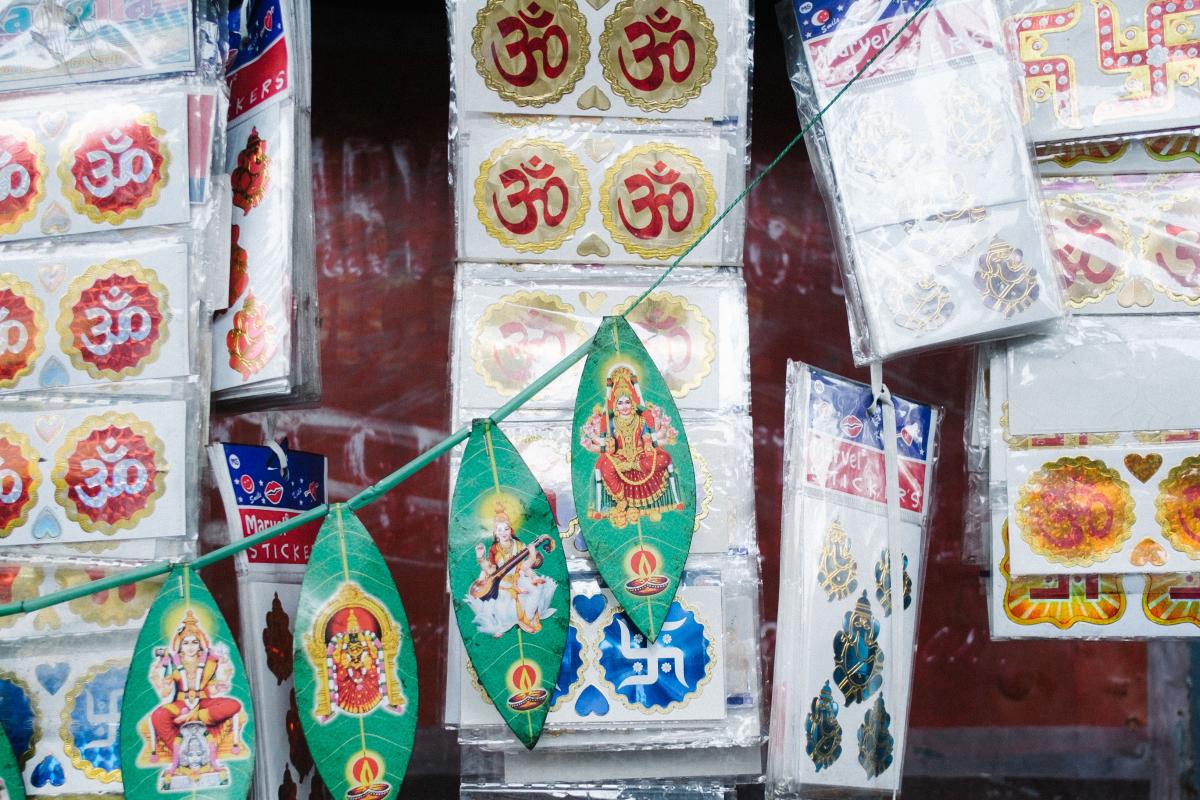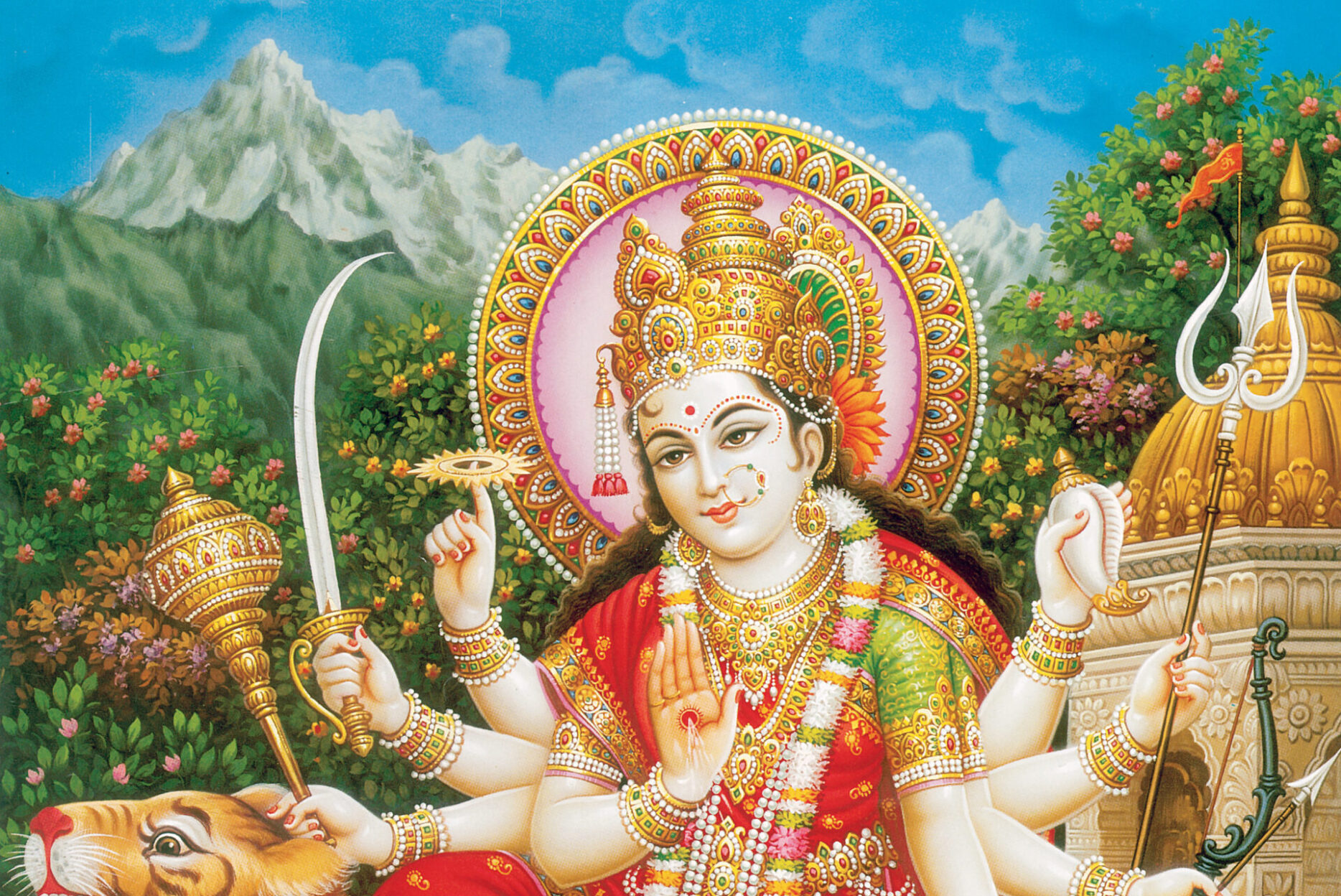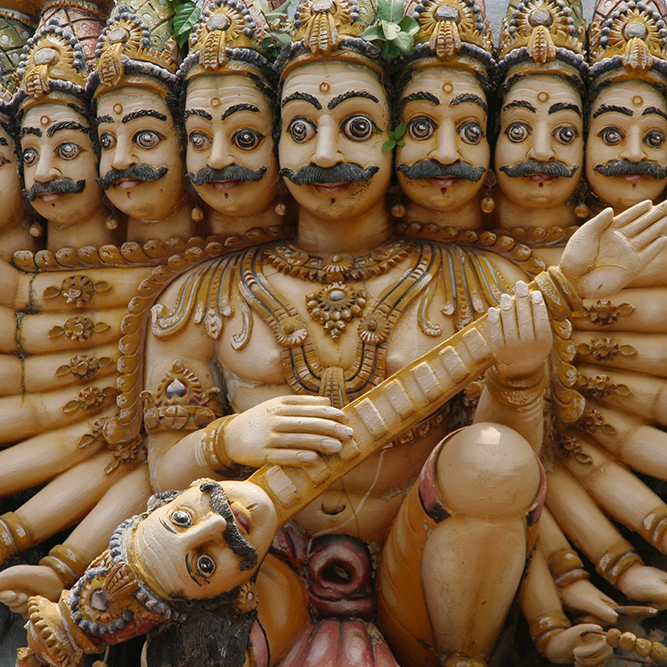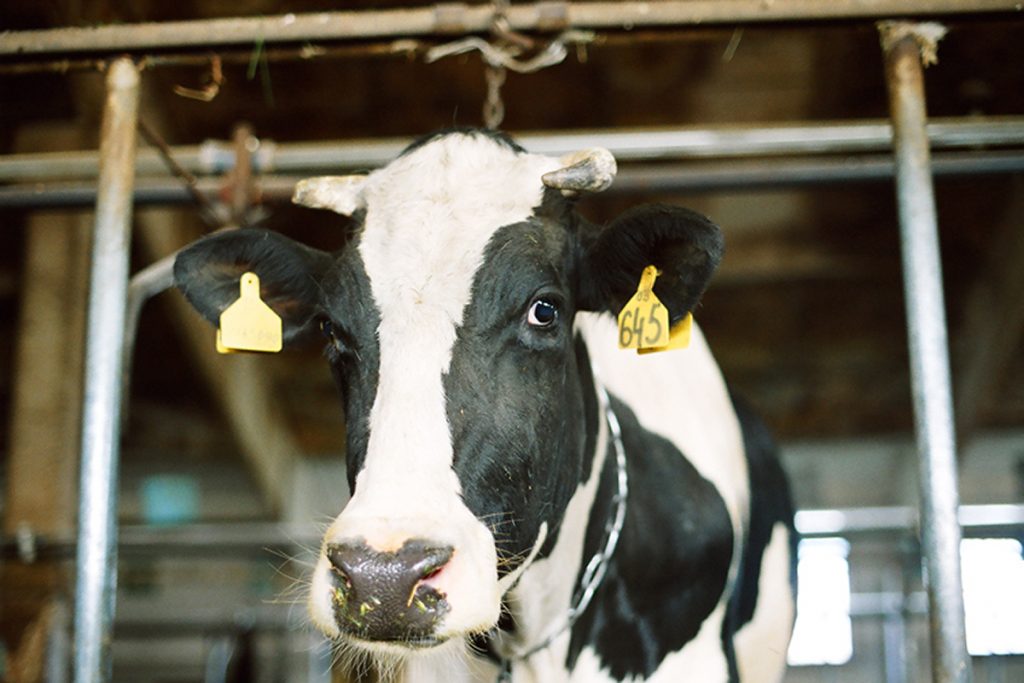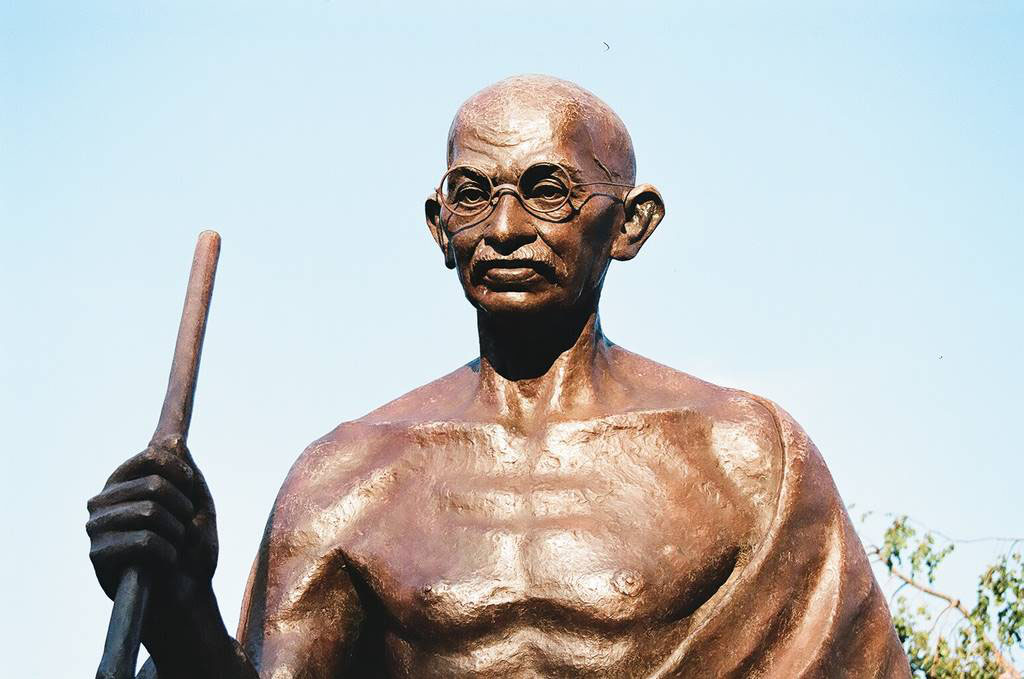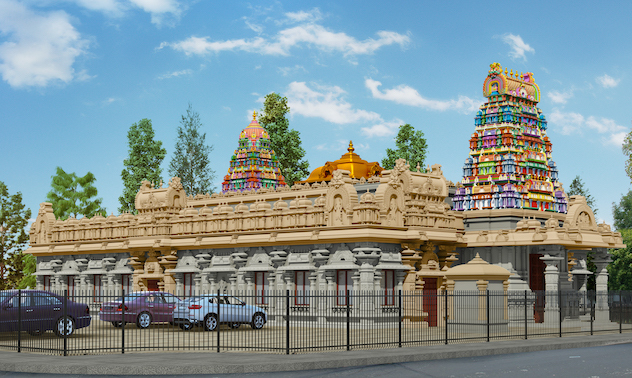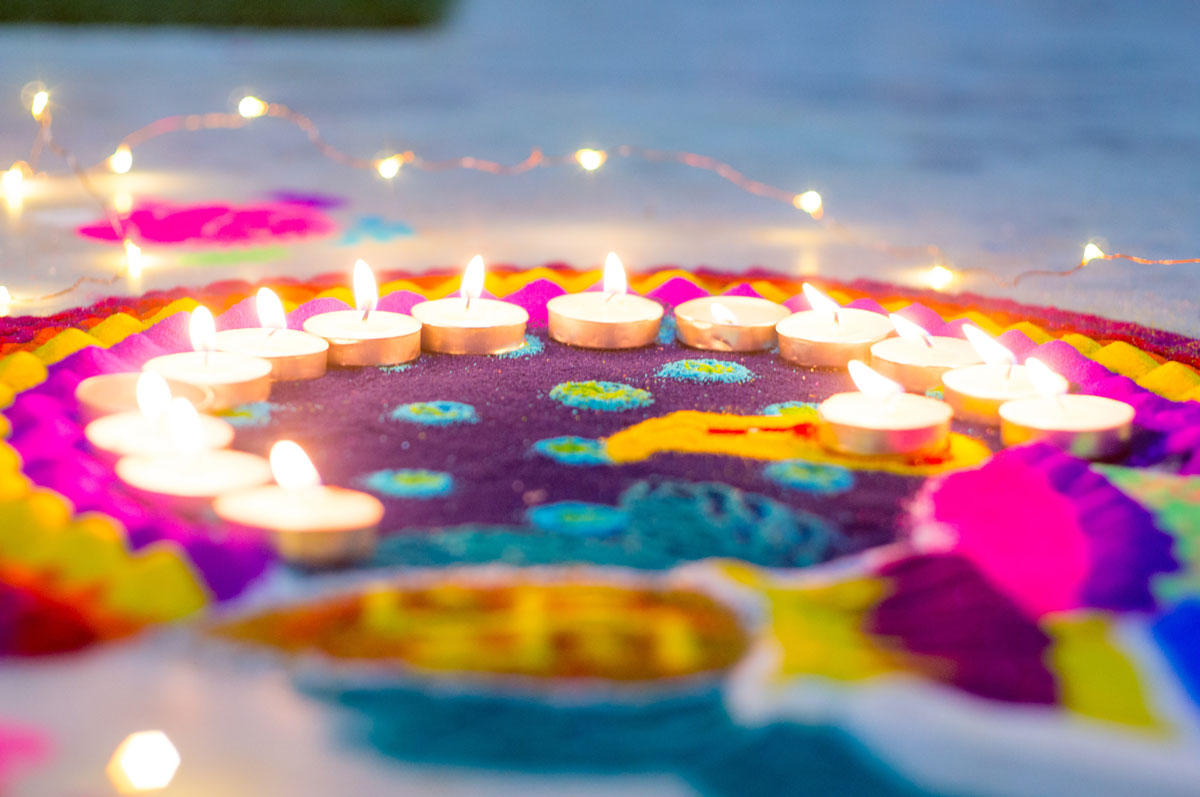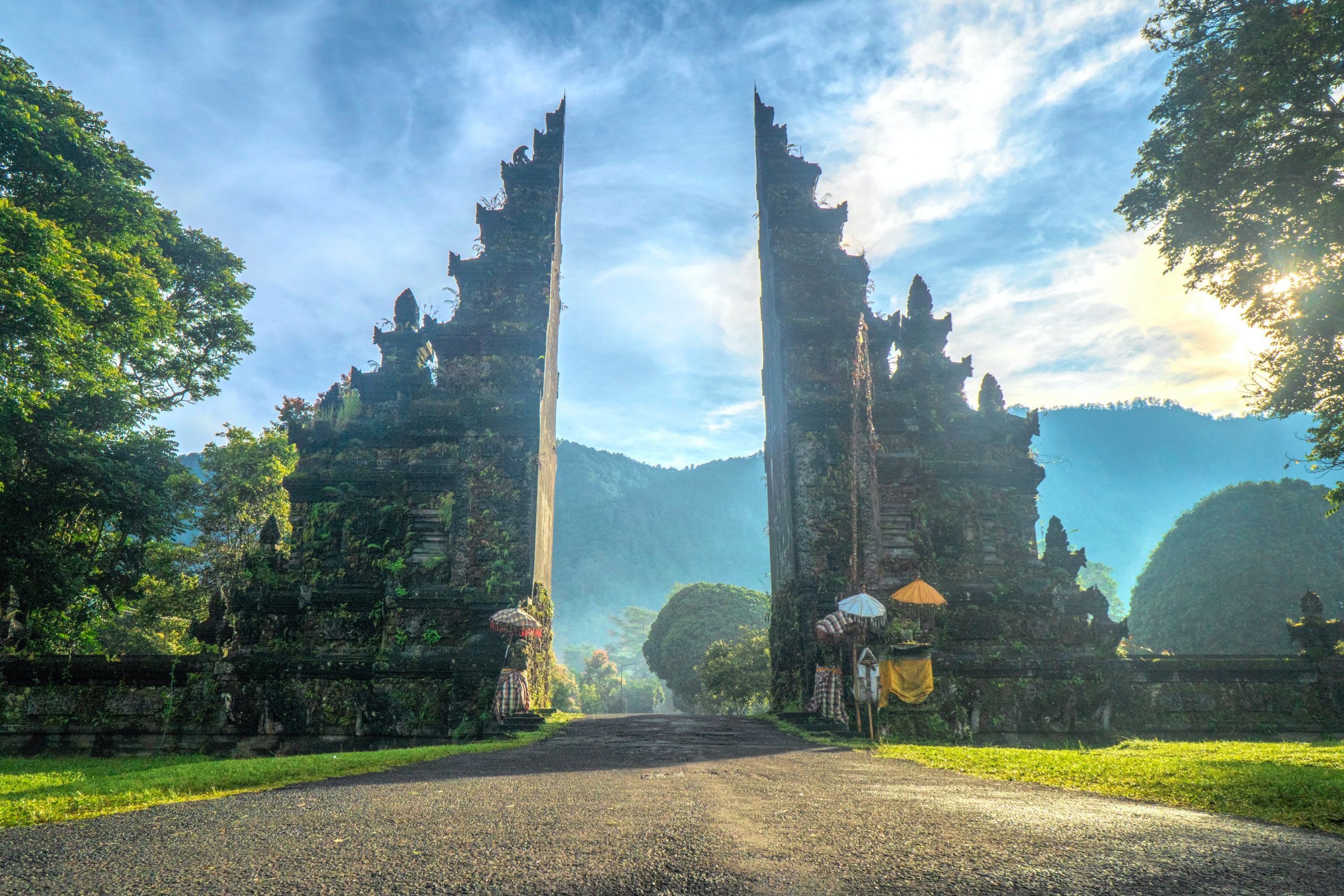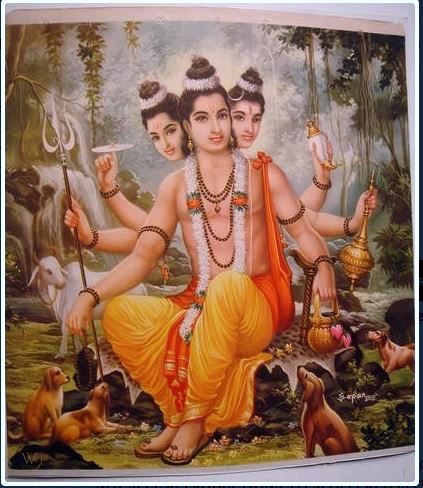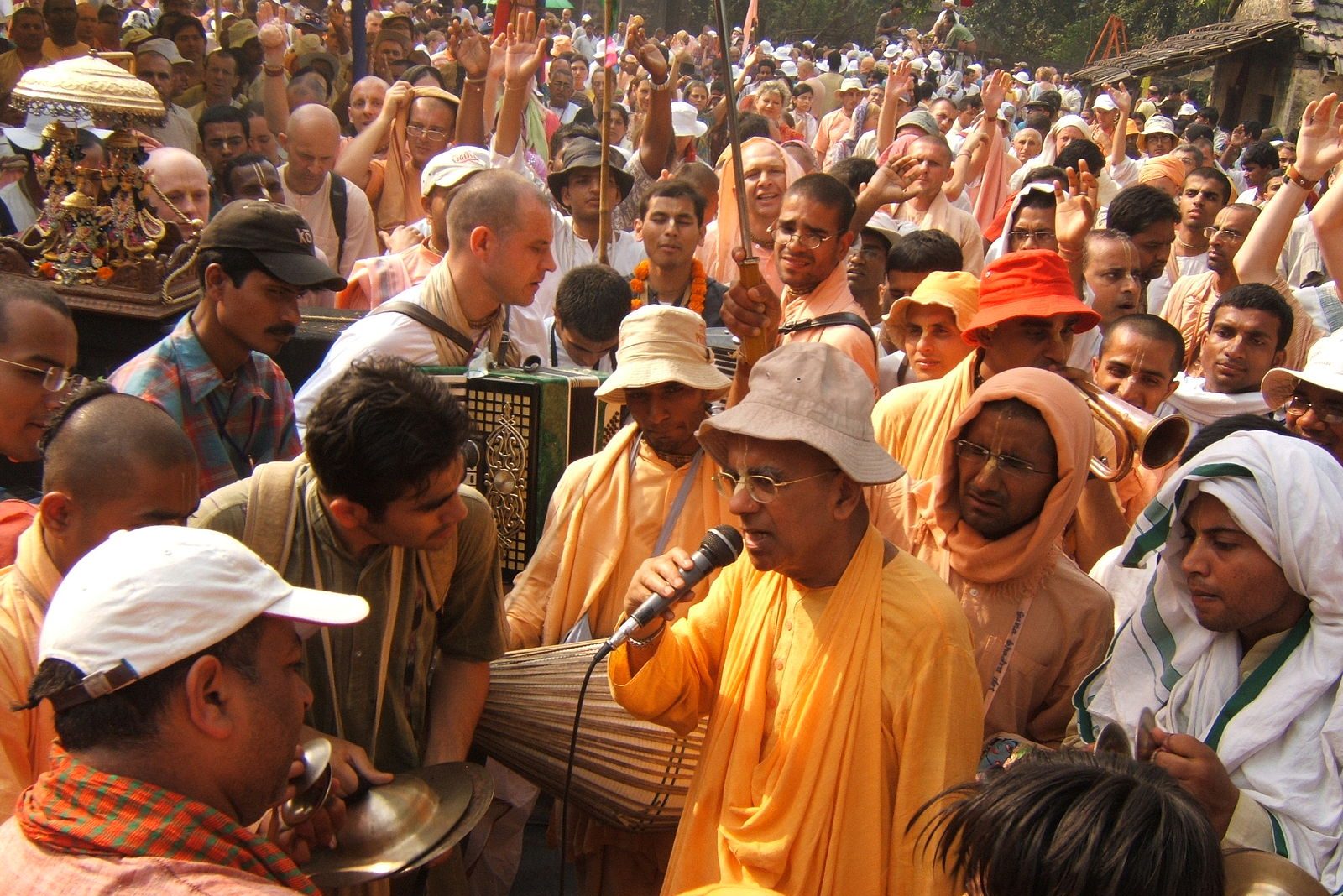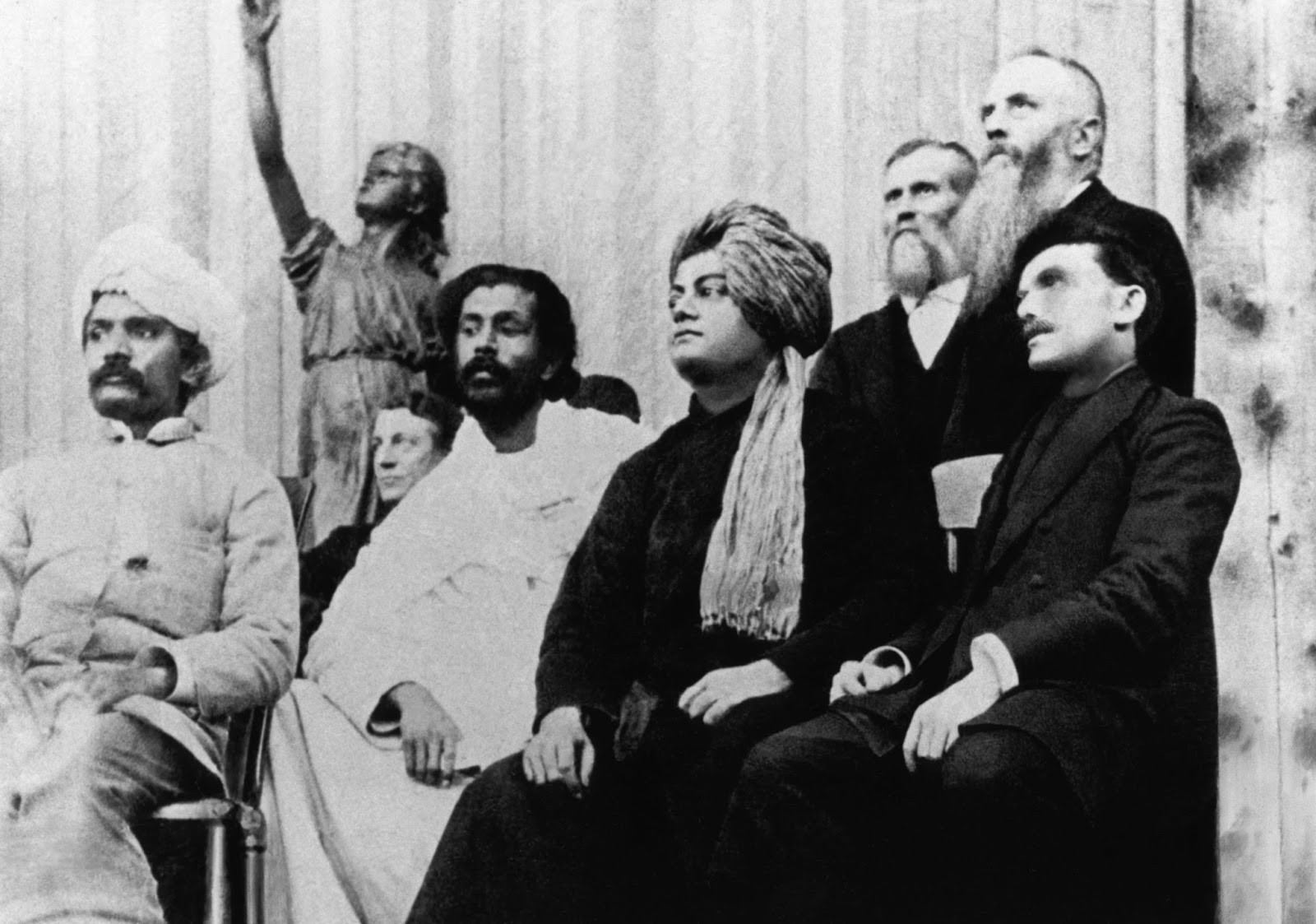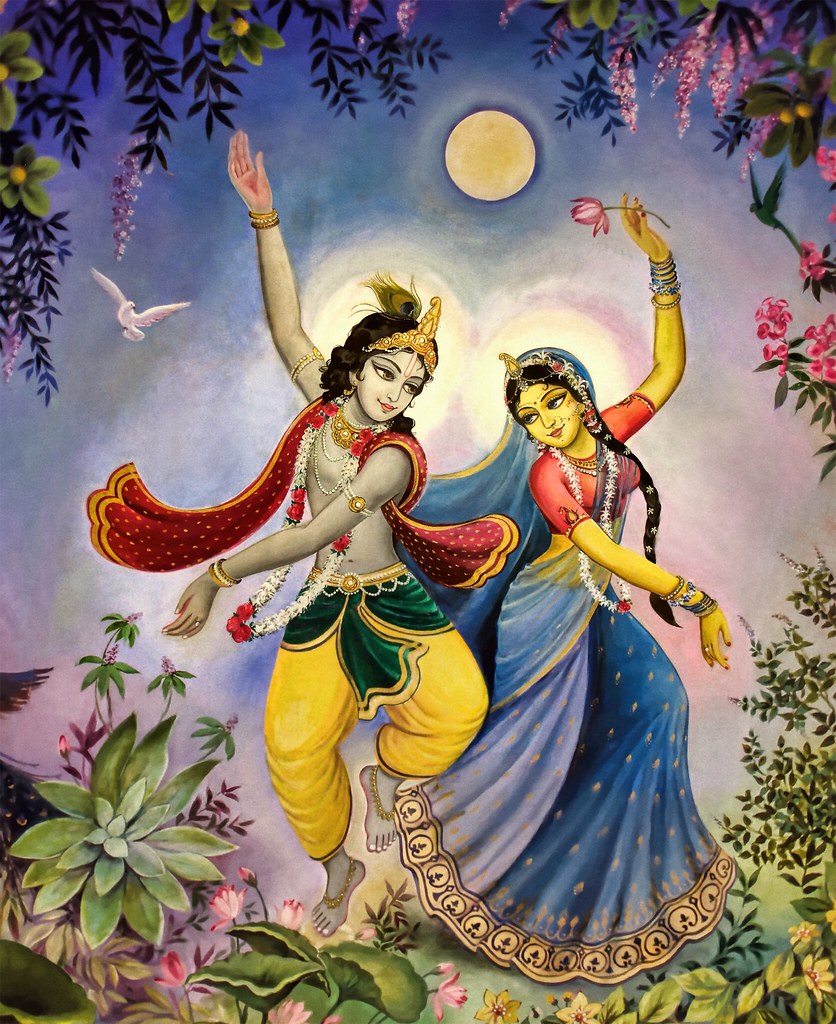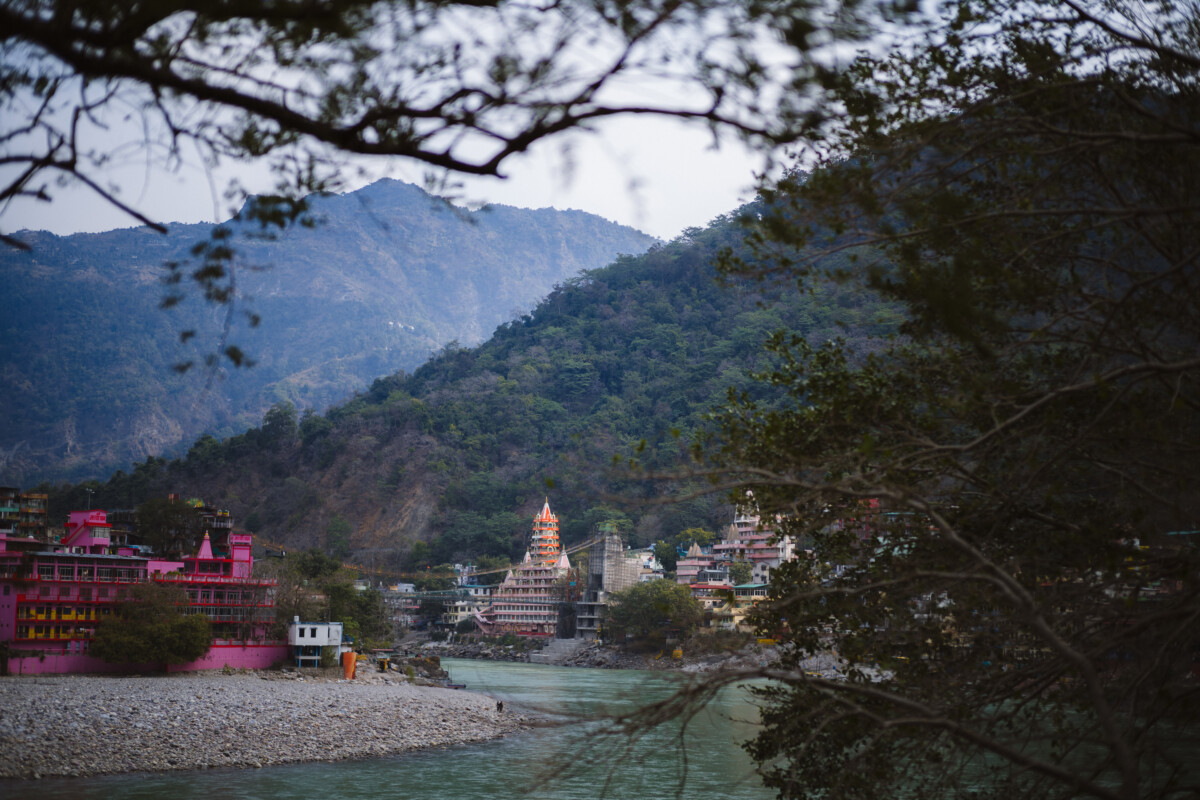

Photo: © Mat McDermott
From Haridwar we took a taxi to Rishikesh, a short distance up-river. There we stayed at Parmarth Niketan Ashram, as we had been invited by some friends who work there.
Again like the ashram in Haridwar, all the people there were very nice and helpful. The whole culture at that ashram, as taught by its resident guru Pujya Swami Chidanand Saraswati, is about environmentalism, not polluting, and so on. The main deity they reverence is Ganga, and they all greet each other with “Jai Gange”. All the Avatars of Vishnu are also venerated there, including Buddha. They also have a huge Hanuman:
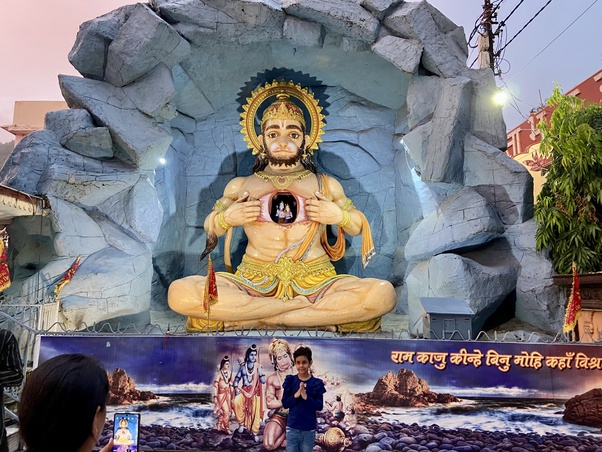
The ashram routine starts at 5am each day, with group sadhana, and includes Hatha Yoga classes each morning and evening, and various satsangs and so on. They serve delicious food too. Each day at the ashram culminates with a Ganga Homa by the river at sunset.
The ashram also has a beautiful courtyard with a big sacred banyan tree, various other tree shrines, and a Navagraha shrine.
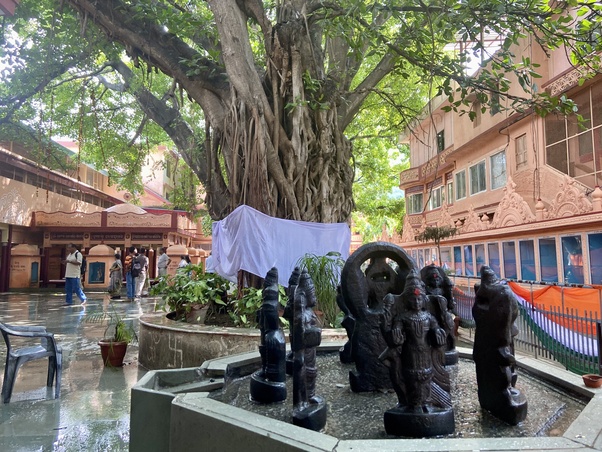
Rishikesh’s spirituality is in the Ganga Herself
In Rishikesh, we spent a lot of time just staying by Ganga. The spirituality of this town lives mainly in the river Herself. The people’s love of the river is palpable, even in the graffiti on bridges:
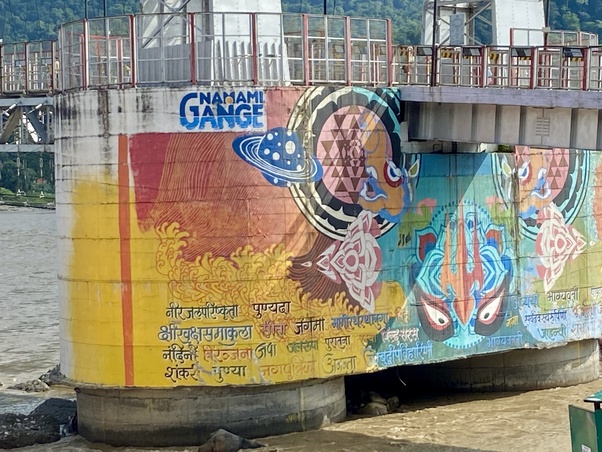
Rishikesh is surrounded by jungle. Tributary streams and waterfalls pour into Ganga. The sounds of water and birds come from all around. The dappled sun glints through the green leaves. Large bands of beautiful silver langurs move through the clattering palm trees, jumping and screeching.
Rishikesh’s human culture is very spiritual. Dozens of Mandirs and Ashrams line Ganga’s banks, attracting crowds of devotees. They have good pujaris, with many more in training.
A friend of mine who had just stayed at Parmarth Niketan advised me to climb to the top of Bhootnath Temple’s 13-story tower to watch the sunrise, so we did this on the morning of Oct 10.
While up there, of course we also paid our respects to Lord Bhootnath, the deity of the temple who watches over Rishikesh from atop the high tower:
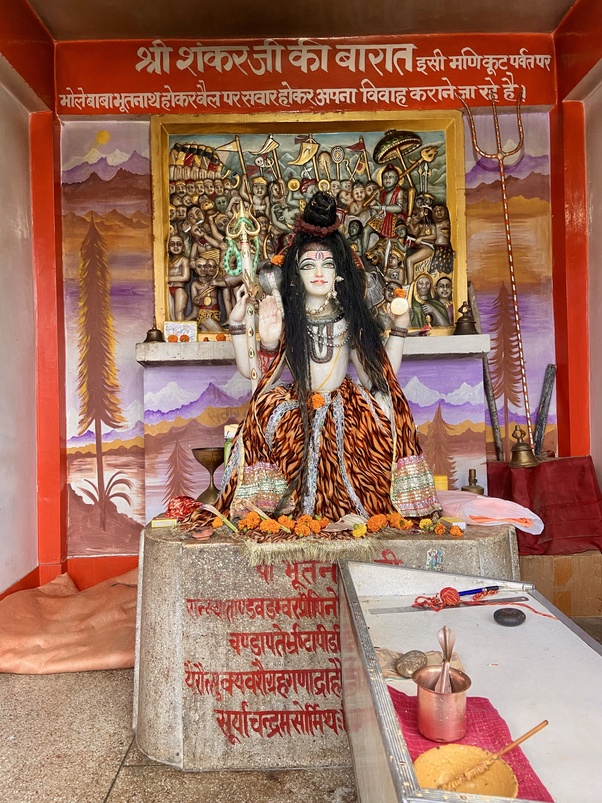
Up to Neelkanth Mahadev Temple
Then we took a taxi higher up into the Himalayan hills, into the Yamkeshwar region of Pauri Garhwal. The beauty of those heavily wooded mountains is stunning, covered with forests of kadamba and other rare trees, their foliage a remarkable green, with turquoise rivers running through the valleys, and some of the more open hills covered in terraces. Truly this region is called a slice of Bhauma Svarga or Earthly Heaven.
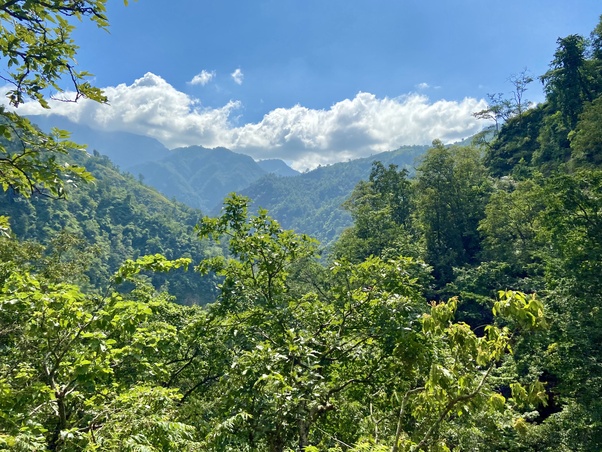
We reached our destination: Neelkanth Mahadev, a temple built around a sacred spring. Bathing in the stream, I potently felt the ancient spiritual depth of the place, strong and palpable.
On the way back down we stopped at the sacred Kali Kund, where a fine local specimen happened to be artfully posed:
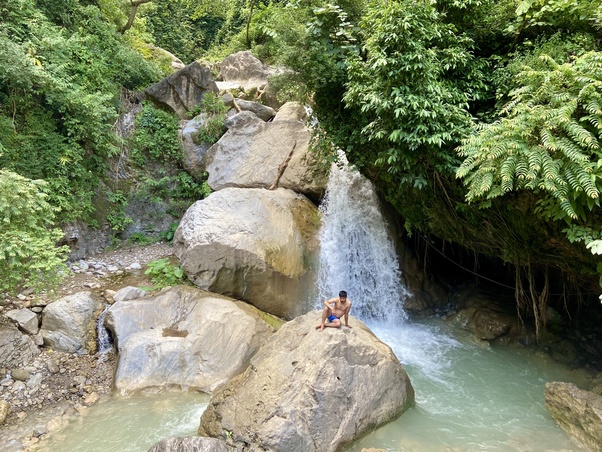
The abandoned ashram of Maharishi Mahesh Yogi
On the morning of October 11 we visited the abandoned ruins of the jungle ashram of Maharishi Mahesh Yogi, of historical interest to us and now covered with beautiful local art:
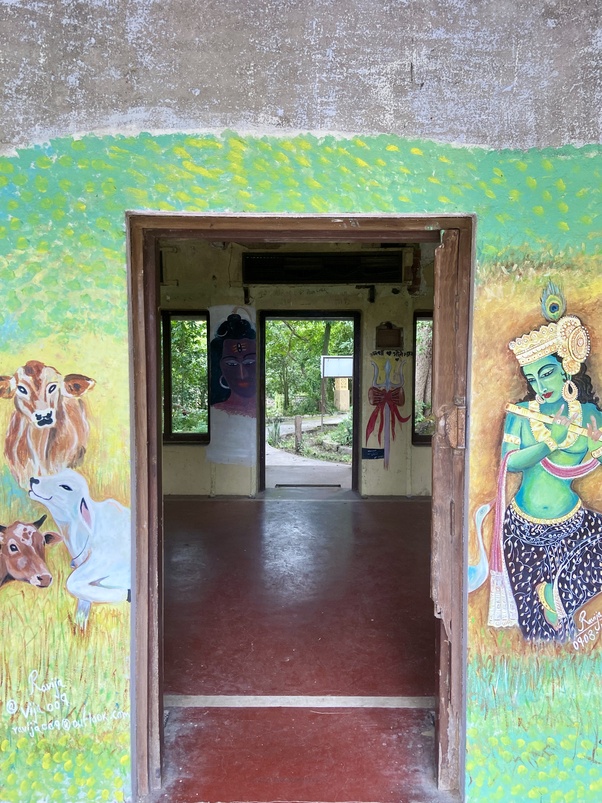
The ashram has been abandoned since the 1970s, and the rainforest reclaimed it extremely quickly. Though now taken over by India’s equivalent of the National Parks Service, many of the buildings are still like old ruins, crumbling and overgrown. It’s strange to think that relatively recently in the scope of history, hundreds of devotees lived here, including many people I know, as well as such celebrities as the Beatles, the Beach Boys, Mia Farrow, Deepak Chopra, and Ravi Shankar. Now this place is thickly haunted by ghostly memories. Once reclaimed by the jungle, the 108 meditation caves (more like huts, really) crafted from rocks and mud from the Ganga, are now again accessible to visitors.
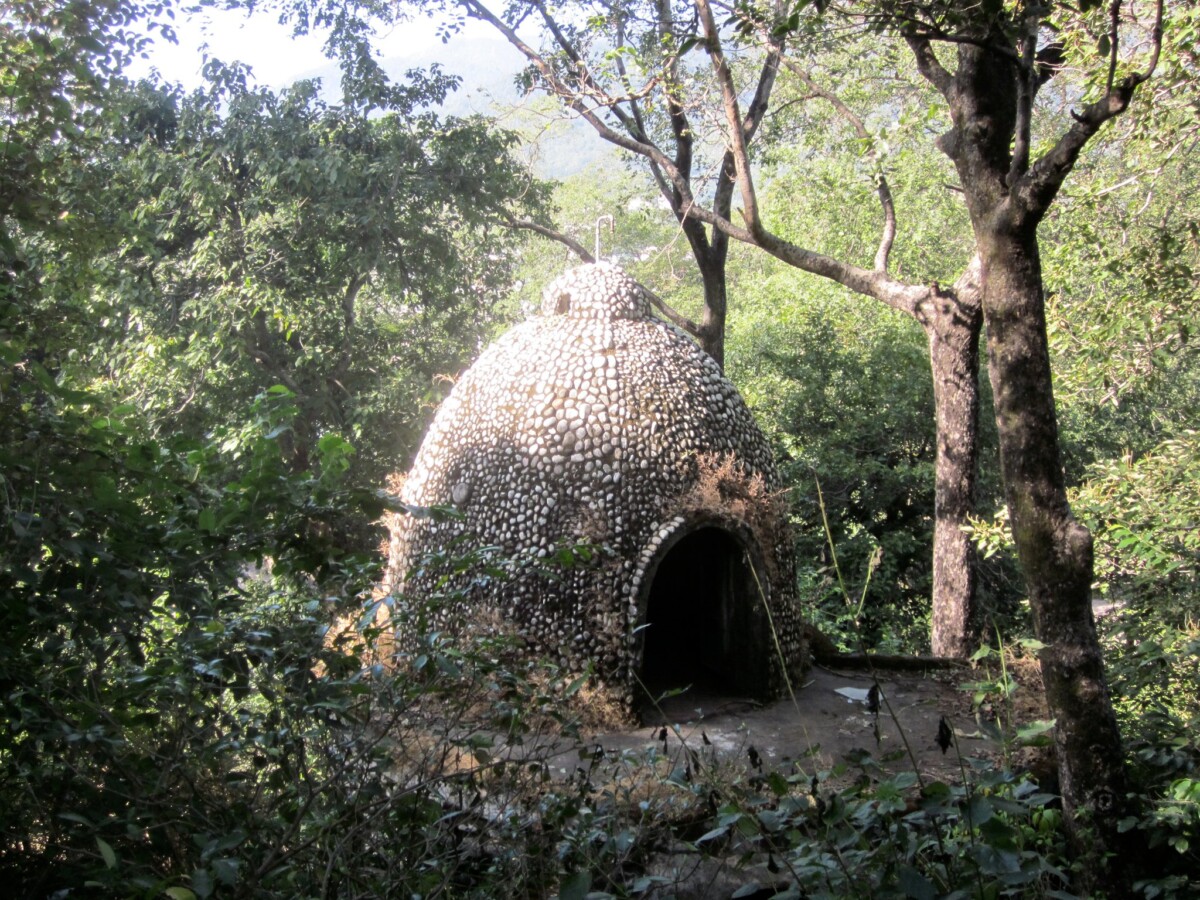
A note: Though I undertook this trip in the autumn of 2022, information on the temples and places visited presented at the links in this article are current as of mid-2025. Logistical details of getting between places can change quickly, however, and individuals should verify the latest information from other sources.
All photos in this article © Devala Rees.


